1 October 2011
Ripple marks and cross beds in the Morrison Formation
Posted by Callan Bentley
This past summer, the day after my examination of basement complex along the Colorado/Wyoming border, I drove north to Greybull, and then with Virginia Museum of Natural History paleontologist Butch Dooley to a dinosaur dig site north of Shell, Wyoming. There, in the Bighorn Basin west of the Bighorn Mountains, are dinosaur-bearing exposures of the Jurassic Morrison Formation. While Butch and his son and his two volunteers went to work excavating a hadrosaur tibia, I wandered around and nosed among the hills and made little discoveries. I’ll share a few of them with you over the next few days. First up: some ripple-marks and cross-beds, which are really the same thing viewed in three dimensions vs. being viewed in cross-section. These are all in sandstones of the Morrison Formation:
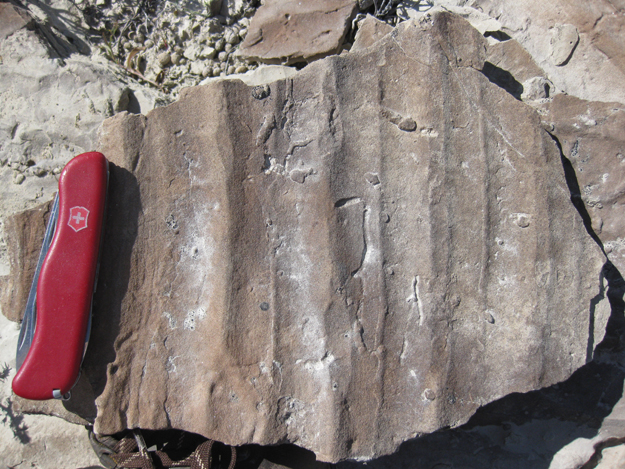
This one, and the two that follow, have some interesting adornments on the bedding plane: some that appear to be trace fossils; others that could be tool marks; and some that are cavities perhaps left when organic matter rotted away…
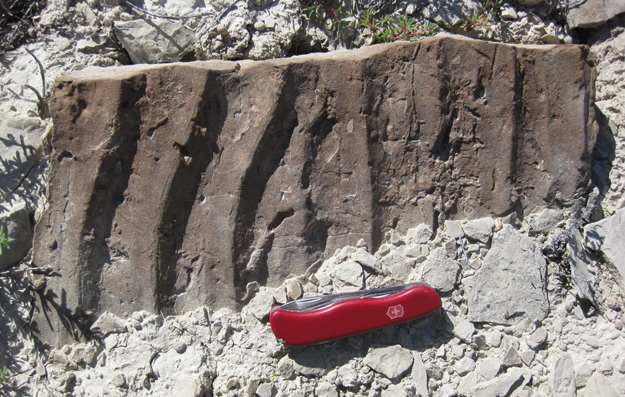
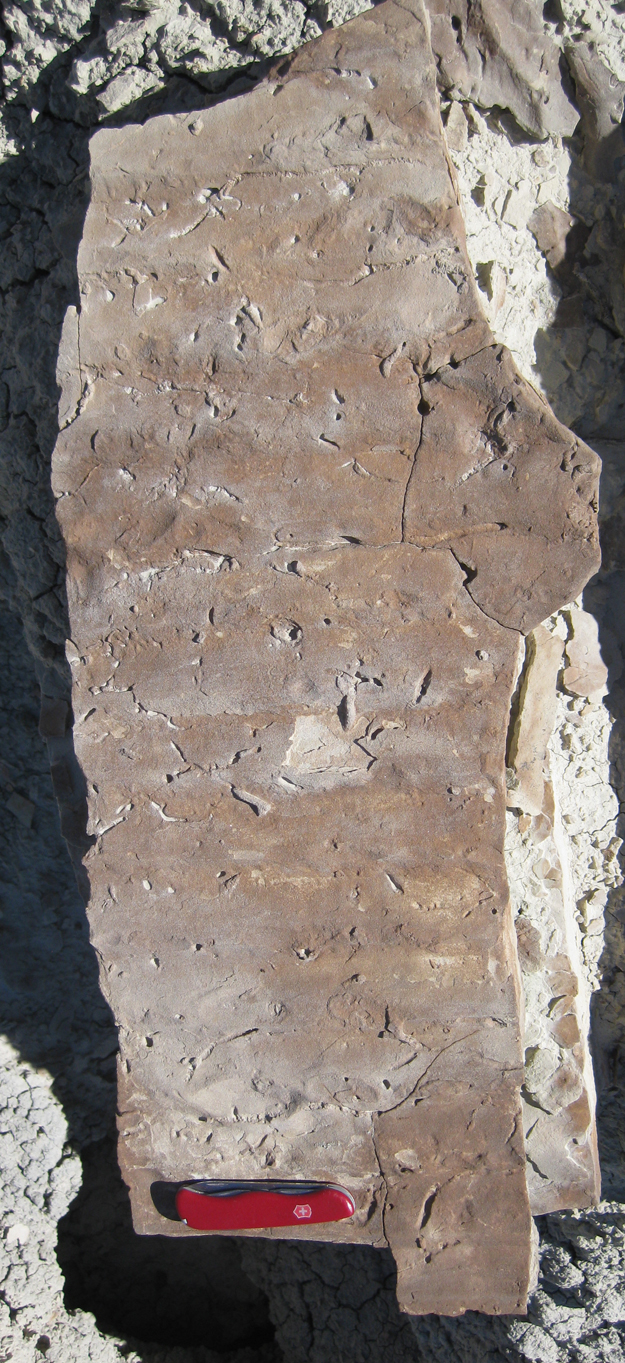
Here’s an animated look at a small hand-sample of ripples, showing three ripple crests, and the cross-bedding that comprises their internal structure:
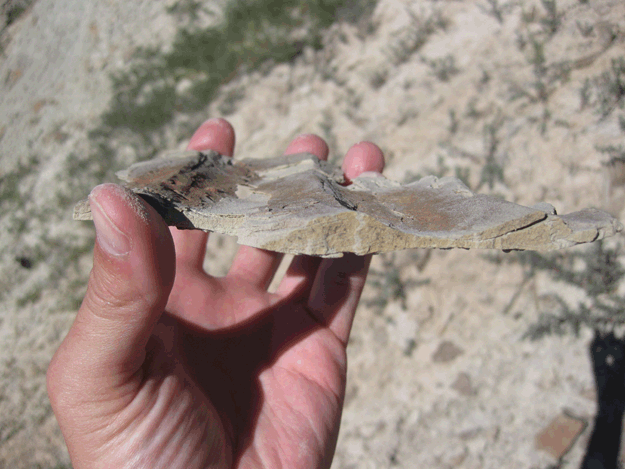
Snapshot of the same sample (middle frame of the GIF above), with annotations:
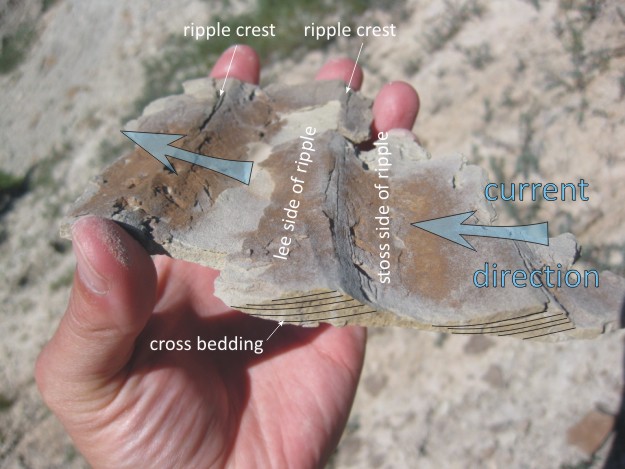
Asymmetrical ripples form due to the deposition of sediment (sand, in this case) on the bed of a stream or other body of moving water. The topographic relief provided by the ripple ends up creating slightly different conditions upstream and downstream of it. The upstream or “stoss” side of the ripple is exposed to the full brunt of the current, and is a site of erosion. The downstream or “lee” side of the ripple is in the “current shadow” and has slightly less energetic water conditions. As a consequence, sand can settle out in these slightly protected circumstances, accumulating on the downstream face of the ripple, and laying down the thin laminations that may be preserved as cross-bedding.
The thing I really like about that sample above is how you can see the delicate cross-bed layers cropping out on the stoss side of the ripple: in contrast to the usual “dip” view of cross-bedding, this shows them “striking,” and their strike is parallel to the ripple crest!
Here’s a strictly side-view, showing the cross-bedding of multiple layers:
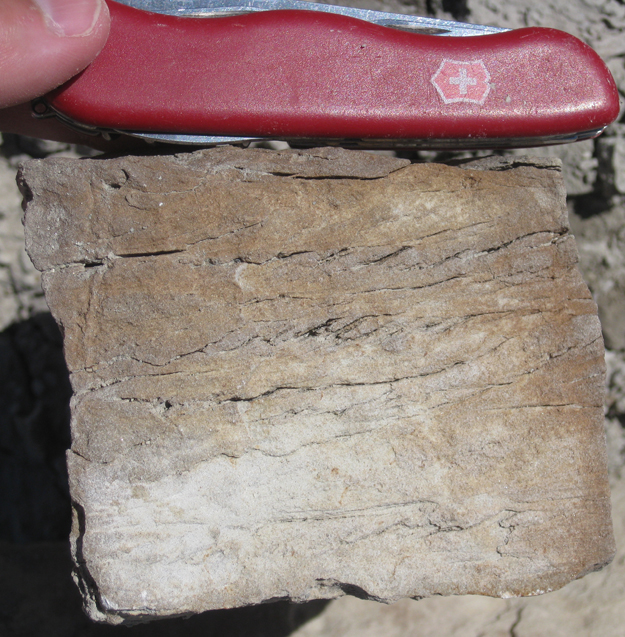
Some annotations, showing how useful cross-beds can be in determining ancient current directions. Because they look different up-side-down than right-side-up, cross-beds are also useful in determining younging direction, or “paleo-up”:
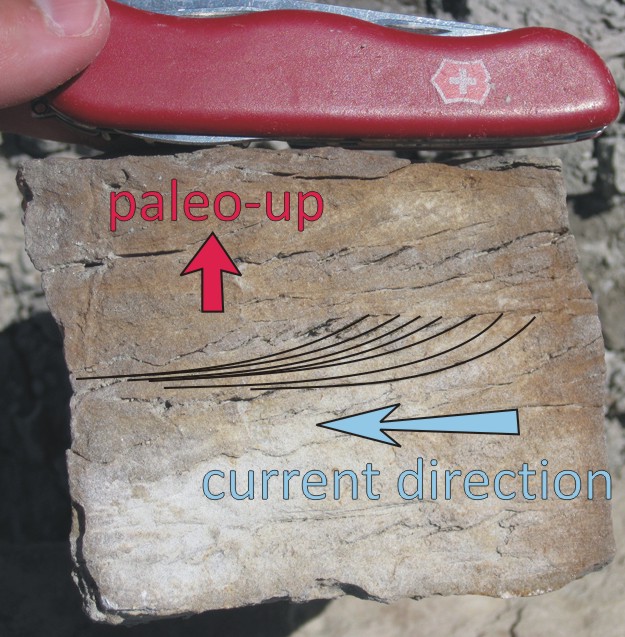
Next, we can take a look at some “climbing ripples,” which form in depositional settings of high sediment supply: deposition dominating over reworking of sediment due to erosion on the stoss side of the ripples.
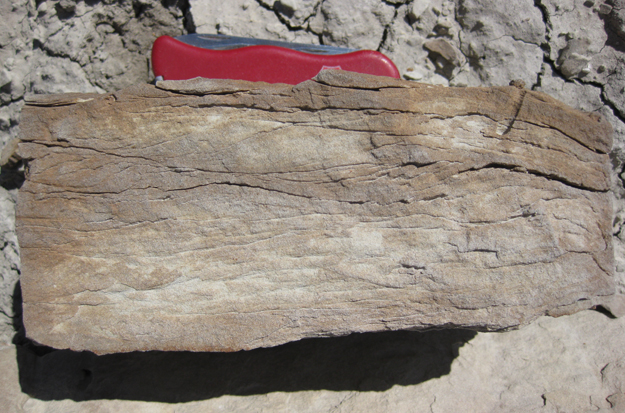
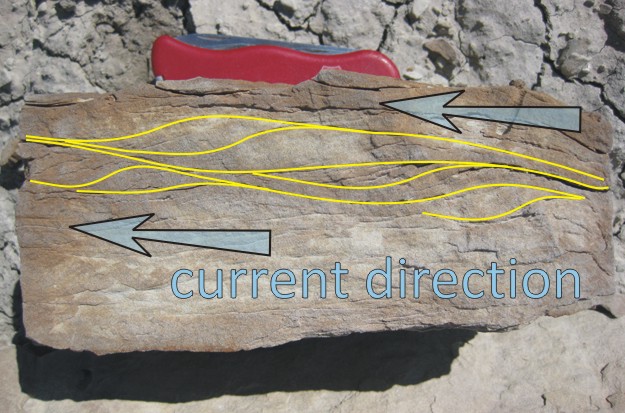
Another, similar example is below – but the current would have been flowing in the opposite direction (left to right):
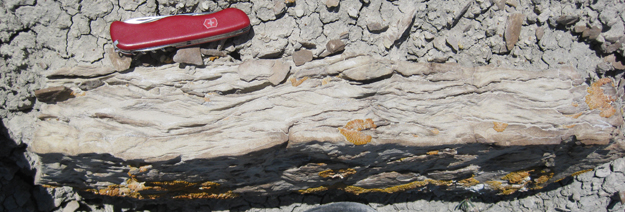
In this last photo, the ripples “climb” up and to the right.
Nice examples, eh? I collected a couple of samples there to add to the NOVA teaching collection.


 Callan Bentley is Associate Professor of Geology at Piedmont Virginia Community College in Charlottesville, Virginia. He is a Fellow of the Geological Society of America. For his work on this blog, the National Association of Geoscience Teachers recognized him with the James Shea Award. He has also won the Outstanding Faculty Award from the State Council on Higher Education in Virginia, and the Biggs Award for Excellence in Geoscience Teaching from the Geoscience Education Division of the Geological Society of America. In previous years, Callan served as a contributing editor at EARTH magazine, President of the Geological Society of Washington and President the Geo2YC division of NAGT.
Callan Bentley is Associate Professor of Geology at Piedmont Virginia Community College in Charlottesville, Virginia. He is a Fellow of the Geological Society of America. For his work on this blog, the National Association of Geoscience Teachers recognized him with the James Shea Award. He has also won the Outstanding Faculty Award from the State Council on Higher Education in Virginia, and the Biggs Award for Excellence in Geoscience Teaching from the Geoscience Education Division of the Geological Society of America. In previous years, Callan served as a contributing editor at EARTH magazine, President of the Geological Society of Washington and President the Geo2YC division of NAGT.
Hadn’t even read the words yet, saw that first set of ripples and lost my breath completely. Fantastic! I love your posts, especially your mark-ups – I learn more with you in five minutes than I do with some entire books!
That’s sweet of you to say. Thanks: it’s always nice to hear that one’s work is appreciated.
[…] up from Saturday’s post about ripple marks and cross-bedding in Morrison sandstone from north of Shell, Wyoming, let’s scoot away from the purely geological content for a […]
[…] so I was out photographing ripples and admiring lichens, and then I saw […]
Many thanks for this blog!! I have learned how to interpret the ripple marks in just one minute!! I can now explain confidently which way is the younging direction in the pile of metasandstones and metasiltstones of my study area!!